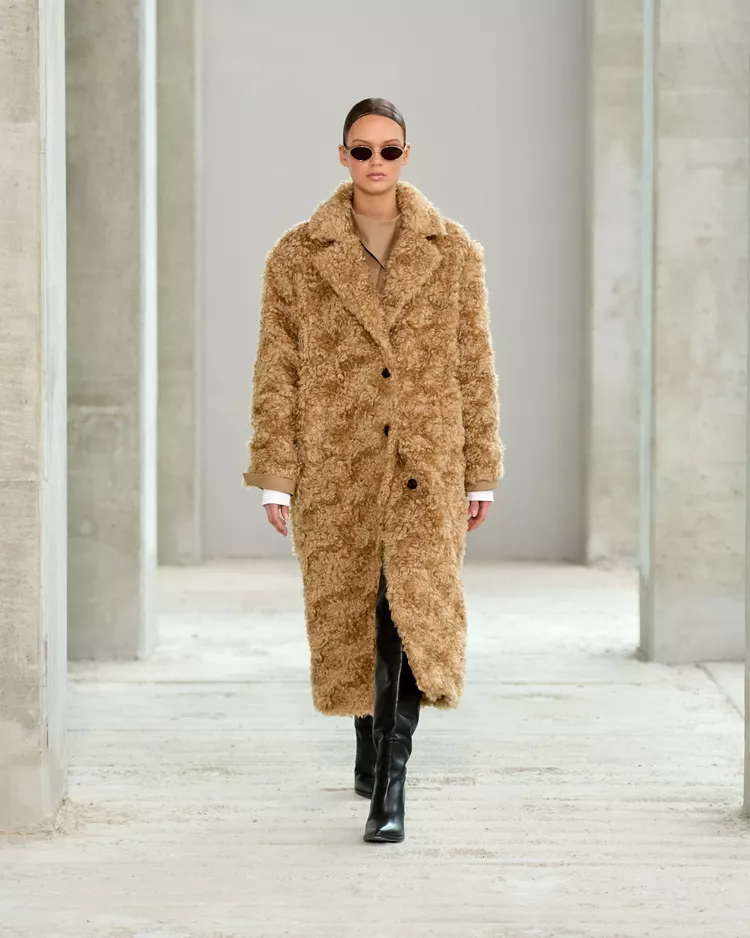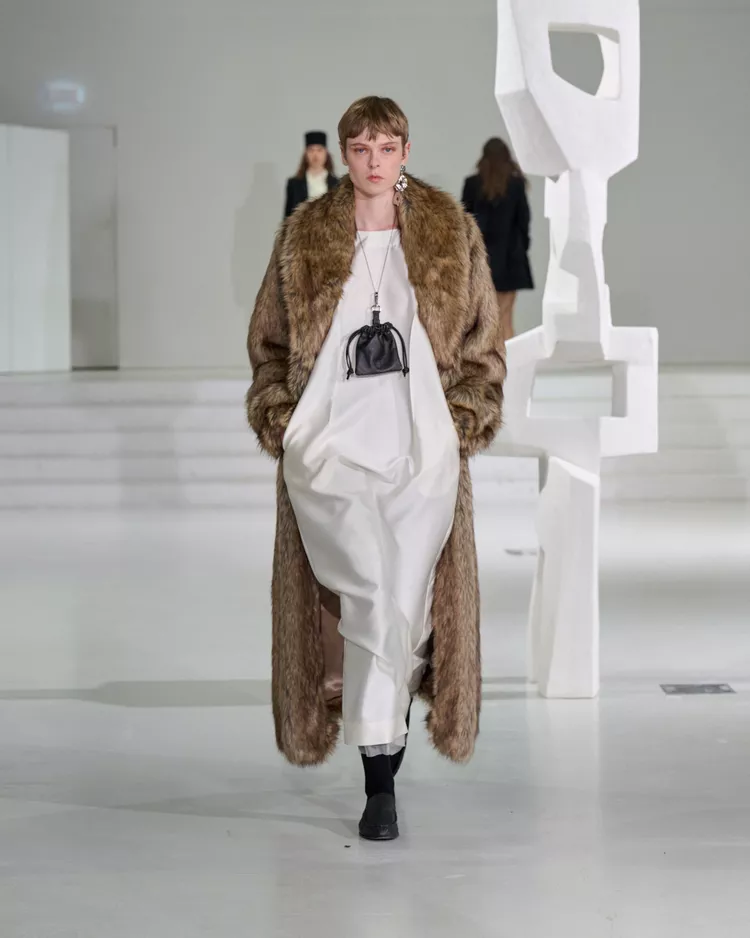Faux fur has entered a new era—one where its resemblance to real fur is uncanny. At Copenhagen Fashion Week AW25, designers showcased coats that looked so authentic that a second glance was required to confirm they were synthetic. Gone are the days of bold, candy-colored faux furs that embraced their artificiality. Instead, the runways were dominated by coats in natural hues, featuring textures, movement, and sheen that closely mimic animal pelts. The trend marks a shift in the fashion industry’s relationship with faux fur, pushing boundaries in material innovation while reigniting the debate on real versus synthetic luxury.
Among the standout presentations, Herskind and The Garment led the charge with elegant overcoats in rich brown tones, resembling genuine mink and fox fur. The Garment’s dip-dyed designs, complemented by silk linings, exuded an undeniable authenticity. Munthe took it a step further with an intricately designed faux leopard print coat that could easily be mistaken for real animal hide. Even Rotate, known for its bold and playful designs, opted for muted, natural-toned stoles and coats, reinforcing the shift towards realistic faux fur.

The resurgence of hyper-realistic faux fur coincides with renewed discussions surrounding vintage fur. Some designers, like Alectra Rothschild, have taken an upcycling approach, advocating for the reuse of existing fur rather than producing new synthetic alternatives. Rothschild argues that discarded real fur should be repurposed rather than wasted, aligning with the sustainability movement in fashion. This perspective, however, remains divisive. Munthe, for example, maintains a firm stance against real fur, whether vintage or upcycled, instead celebrating how far faux fur has come in its ability to replicate the real thing.

For some designers, the appeal of hyper-realistic faux fur is rooted in accessibility and luxury. Rotate’s creative directors, Jeanette Madsen and Thora Valdimars, emphasized that their goal was to create statement coats that offer the opulence of real fur without the exorbitant price or ethical concerns. The brand’s latest coats, crafted to be “fluffy, dense, and dramatic,” strike a balance between high fashion and affordability, making luxury more inclusive.

The trend is also driven by advancements in material technology. Scandinavian brand Stand Studio, long known for its expertise in faux fur, has been developing increasingly realistic textures, using polyester variations to achieve a convincing finish. Founder Nellie Kamras notes that the demand for these ultra-authentic designs has grown exponentially. “The development of faux fur has become so strong that today, you can’t tell whether it’s real or faux,” she explains. Still, not all consumers embrace the hyper-realistic look. Some prefer bold, obviously synthetic alternatives to avoid any association with real fur, underscoring the complexity of fashion’s evolving stance on the material.
As faux fur continues to push the boundaries of realism, the conversation surrounding ethical fashion and luxury is evolving. The AW25 collections suggest that designers are no longer merely offering an alternative to real fur—they are creating something indistinguishable from the original, challenging perceptions of what sustainable luxury can be. Whether this movement will make vintage fur more acceptable or further solidify faux fur’s dominance remains to be seen. What’s certain is that fashion’s love affair with faux fur is far from over, and its next evolution may blur the lines between imitation and authenticity even further.
